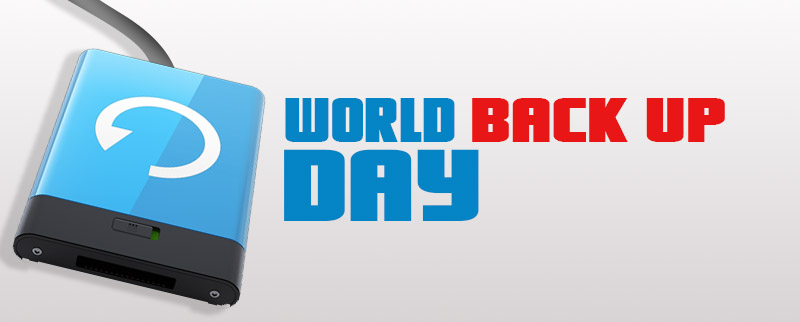
How To Keep Your Information Safe – World Back-Up Day
World Back-Up Day (WBD), is all about getting people to realise just how vulnerable their personal information and data can be.
We never think that our computers can fail, or that we’ll be the ones to have a phone stolen – but these things happen to thousands, perhaps even millions, of people every day around the world. Despite that, the WBD website says that 30% of people have never backed up their data.
Today we’re urging people to take the first step on their back-up journey.
Follow the 3-2-1 rule of backing up your data
You need three copies of anything important
Have it in two different formats
With one of those being off-site
How might this work in practice? Let’s imagine Sarah has signed a new rental contract for her premises. She needs to keep the document safe. She scans the contract, keeps one copy on her computer and backs-up to an external hard drive.
Next, she puts her paper copy of the contract into a fire and water-resistant case and places it in a secure filing cabinet. (She could also copy it to CD.)
Finally, she unplugs her computer’s external drive and takes it home. (And, because she’s extra cautious, she backs up to a secure USB stick, too.)
Now Sarah has a digital copy on her computer, a physical copy in her filing cabinet and another digital copy (well, two of them) at home.
If you’re wondering why I’ve not prioritised saving things to the Cloud – for example, services such as #Dropbox, Google Drive or Microsoft’s OneDrive – that’s because those services aren’t in your control.
If you forget your password, or there’s a technical hitch that means you can’t log on, that data is lost until those issues are resolved. Saving data to the Cloud can be done in addition to local back-ups, but it shouldn’t be the only way you save your data.
What if you’re ‘working from phone’ ?
If you’re as old as I am, you might remember the beginnings of remote working. Even before the 80’s enormous mobile phones, we had toddler-sized ‘laptops’ that required their own seat on the bus.
But now we’ve got smartphones and tablets: smaller, easy to steal and even easier to lose, so you need to plan for your device going missing and your data being lost or compromised.
Firstly, that means backing everything up. Making sure that all those precious photographs and videos don’t just stay on your handset, but are copied to your computer with spare copies kept at home.
Secondly, you need to secure your handset in case of theft.
If you’ve got an iPhone, iPad (or MacBook), then you should sign into Apple’s Find My iPhone service, which allows you to track your missing device and even delete all the data on the phone.
If you’re using an Android handset, I’ve heard very good things about an anti-theft app called Cerberus. This does everything Apple can, but you can also tinker with it to take photos when someone enters the wrong password, turn on the phone’s microphone and get a list of calls made by the thief.
And the final secret to backing-up properly
Do it regularly. Write reminders on the office calendar to just spend half an hour making sure everything is saved and squared away. It’s simply a matter of getting into a routine – that way you stave off threats to vital personal or business data, and save a lot of anxiety and aggravation when, not if, things go wrong.
Previously on The Euroffice Blog
2B or Not 2B – National Pencil Day
Essential Items For Your PA Survival Kit


